Roof Lifespan: How Long Does a Roof Actually Last?
May 16, 2023
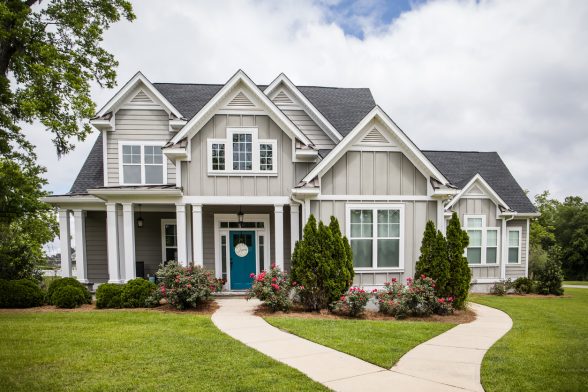
Your roof's life expectancy might not be top of mind, but it’s a serious issue for all homeowners and business owners. Just think of all the things your roof protects from the elements, particularly the people most important to you. You need a strong roof overhead.
Of course, all things tend to wear out and weaken over time, and your roof is no exception. So, how long does a roof last? Even the strongest materials have limited lifespans, no matter how much they cost or how well they were installed.
The question of how long a roof is good for depends on several factors, including the materials used, installation and maintenance methods, and the climate in which you live. We’ll take a look at each of these factors, as well as the timing and process of replacing a roof.
Factors That Affect Your Roof's Lifespan
Many factors impact your roof's life expectancy, such as the type and quality of materials used. Here are some factors that can affect your roof's lifespan.
Type of Materials
Some roofing materials are more durable than others. For example, a metal roof lasts much longer than an asphalt roof.
Quality of Materials
Not all materials are made to last. Low-quality roofing materials lead to a lower roof life expectancy. Although higher quality materials typically cost more, it’s usually worth it in the long run.
Color of Materials
Sometimes, the color of the material can affect your roof's lifespan. Lighter colors are generally recommended in warm climates because dark materials absorb more heat. When shingles get too hot, it is detrimental to their life expectancy.
Quality of Installation
A poorly installed roof will not last as long as one that is properly installed. Check your contractor's reviews online and ask for references. Make sure your roofing contractor is licensed and insured.
Underlayment
Underlayment is a waterproof barrier underneath your roof that adds extra protection in case your roof is damaged. The quality and type of underlayment can also affect your roof lifespan.
The Slope of Your Roof
Flat roofs and roofs with a low pitch are prone to letting water puddle rather than sliding off. This puddling water can promote the growth of molds and fungus, and cause other damage to the roof.
The Elements
Sun, wind, rain, snow, and hail can all affect the lifespan of your roof by causing damage. Wind can rip away shingles, and hail can tear them up. Rapid temperature changes can also wreak havoc on your roof. Tree branches cause damage to the roof by rubbing against the shingles or falling on them during a storm.
Ventilation
Proper ventilation helps the roof maintain an even temperature, reducing the damage from extreme heat or cold.
Regular Roof Maintenance
Regular roof maintenance helps extend the life of your roof. Be sure to inspect your roof annually to check for signs of damage. If you can identify problems in the early stages, you can get them fixed before they become major issues.
How Long Does Each Type of Roof Last?
The primary factor that determines how long a roof will last is the material from which it’s made. On the lower end are asphalt shingles, some of which last longer than others. At the high end are copper and slate roofs, which can last for over half a century. Some even last up to 100 years.
The more durable the material used for a roof, the more expensive those materials tend to be. We’ll take a look at how long each type of roof lasts, along with how much you can expect to pay. That way, you can do the math to determine what you truly get in return for the roof you buy.
The average lifespan of different types of roofs include:
- Asphalt Shingles: 15–30 years
- Composite Shingles: 20–50 years
- Modified Rubber Shingles: 30 years
- Wood Shingles: 30–40 years
- Clay Tiles: 50 years
- Concrete Tiles: 50 years
- Metal Roofs: 50 years
- Copper Roofs: 60+ years
How Different Types of Shingles Compare
We can divide types of roofing materials broadly into shingle roofs and metal roofs. While materials like copper can be installed in the form of shingles, metal roofing is a category unto itself. The different types of shingles include:
How Long Does A Shingle Roof Last?
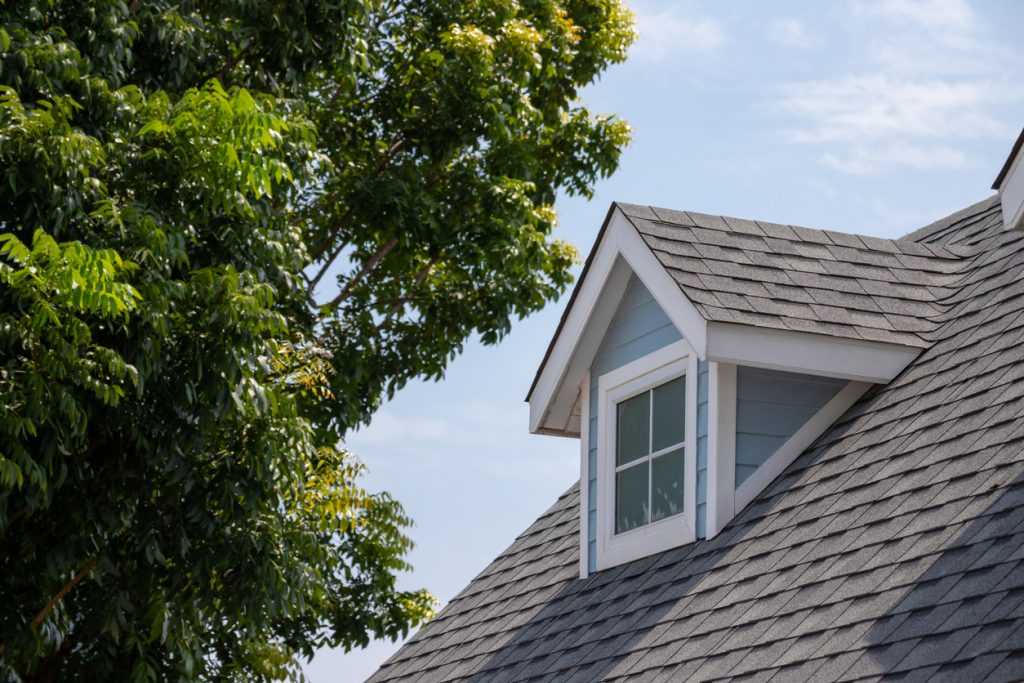
Asphalt shingles are the most common type of roofing material. They date back to the 1920s and are used on the majority of homes today. How long does an asphalt shingle roof last? The average lifespan of an asphalt shingle roof is 10–30 years depending on the type of asphalt shingle you use. They don’t last as long in warmer climates; they are better suited to colder climates. The cost per square foot ranges from $3.50–$5.00.
There are three types of asphalt shingles:
- 3-tab: These are the most affordable type of roof shingle. In the right conditions and with proper maintenance, they can last 10–15 years. These are made from a fiberglass base topped with mineral granules that disperse and reflect the sun’s rays. They are lightweight, easy to install, offer a clean appearance, and are great for homeowners on a tight budget.
- Dimensional: These asphalt shingles have a multi-dimensional texture and appearance. They are extremely durable, lasting 20–25 years. They are made of 2+ layers of shingles to provide added strength. That means, of course, that they cost more than 3-tab shingles.
- Luxury: Top-of-the-line asphalt shingles offer even more multi-dimension and maximum durability. Designed to look like natural slate shingles or cedar shake shingles, but costing much less is one perk. Perhaps most importantly though is that they have extra strength. You might especially want these if you live in Tornado Alley or on a hurricane-prone coast, or if you tend to get a lot of large hail.
Clay Roof Shingles
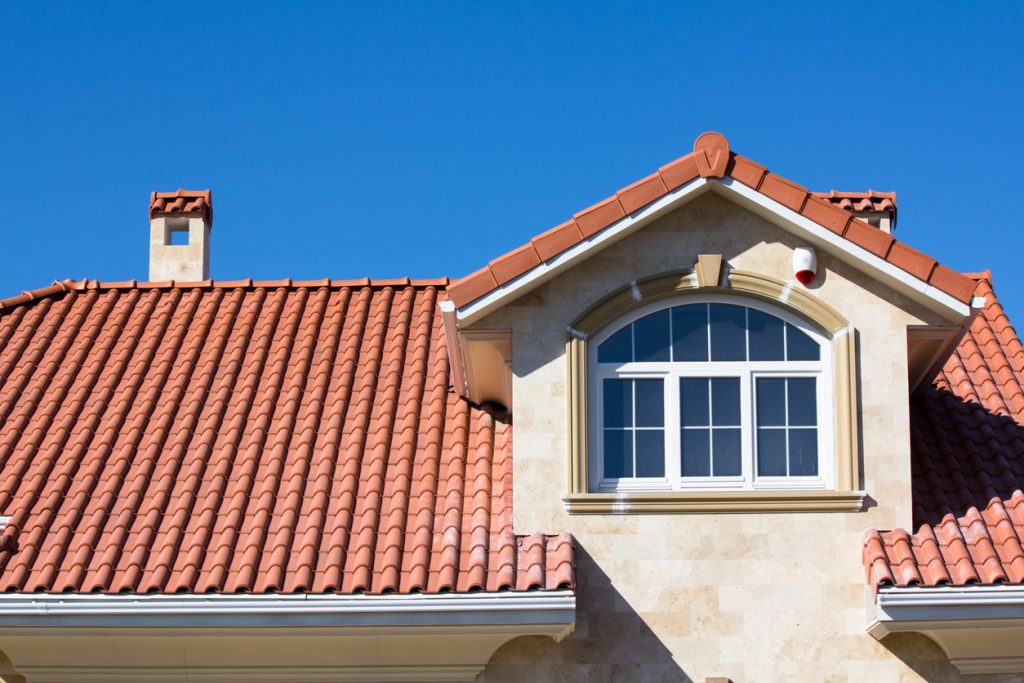
Clay roof shingles, commonly designed in either a Mediterranean or Southwestern style, are a popular roofing material, and can also mimic Victorian slate. They come in either glazed or unglazed finishes and shapes that include flat, fluted, and interlocking designs. Clay shingles can withstand extreme temperatures, meaning they are suitable for virtually any climate. They are, however, particularly resistant to salt, so they are a great choice for coastal regions. While expensive at $700–1,000 per 100-square feet, they usually come with a 50-year warranty.
Concrete Roof Shingles
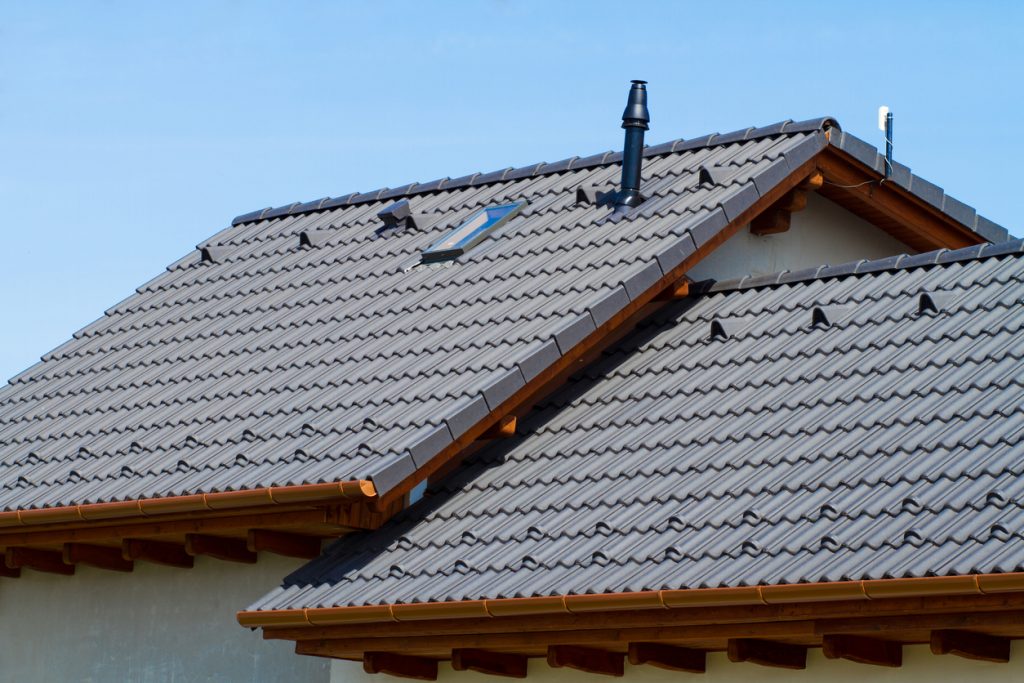
Concrete roof shingles can be simulated to look like just about any style you prefer. The options are endless. They offer long-lasting results of at least 50 years, can withstand wind speeds of over 125 miles per hour, and exceed seismic load requirements. Concrete tiles can be used anywhere including cold climates, if specific installation requirements are met. You can expect to pay between $300–$500 per 100 square feet for these shingles.
Cedar/Wood Roof Shingles
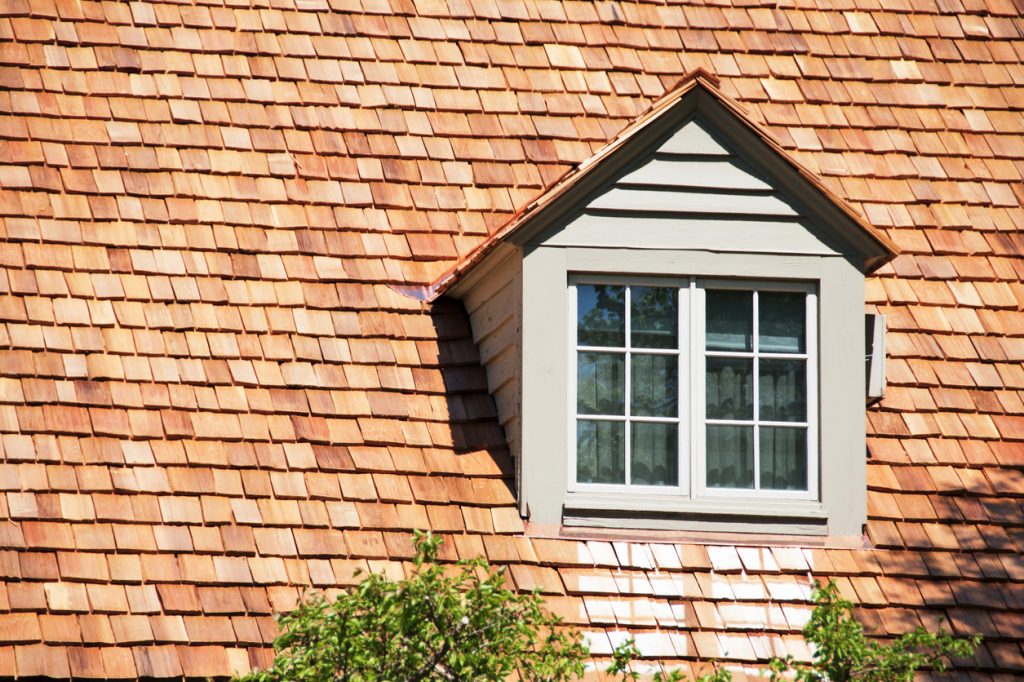
Cedar or wood roof shingles (different from wood shakes in that they are more precisely milled and have a more refined appearance) provide a lovely rustic appearance common on Craftsman-style homes. They are often used in the northeast, even though the salty air may affect the roof's longevity. Still, these shingles can last 30–40 years. The cost is fairly expensive, at $450–$900 per 100 square feet.
Metal Roof Shingles
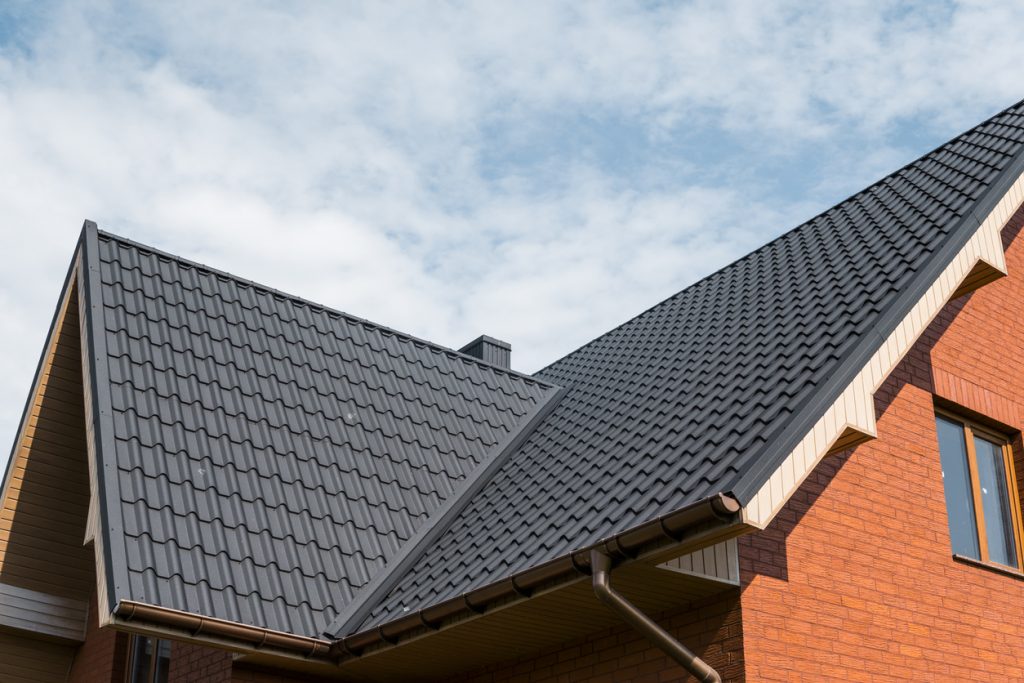
Metal roof shingles are often made of steel with either a galvanized zinc or aluminum coating. These roofing materials are great for climates that experience a lot of storms, large hail, or heavy snowfall, although they may corrode if exposed to sea salt spray. Perks of metal roofs are that they can usually be installed directly over old asphalt shingles and last around 50 years. Costs start at around $300 per 100 square feet.
Composite Roof Shingles
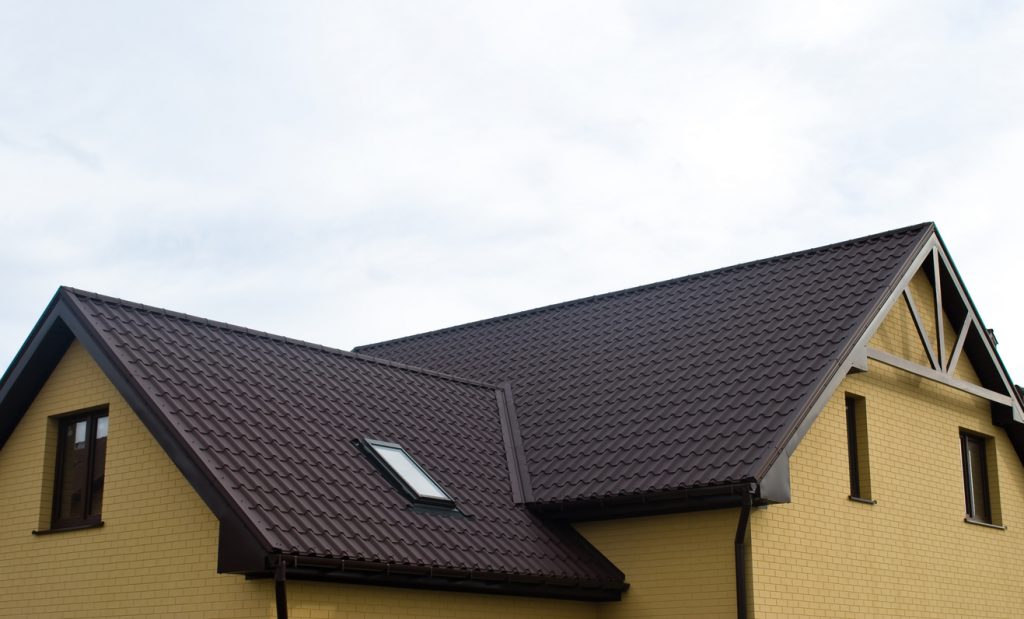
Composite roof shingles are made from a fiberglass-reinforcing mat that is coated with asphalt and mineral fillers. Depending on the type chosen, they can last 20–50 years. While these work well in all conditions if maintained properly, rainy and icy conditions can weaken them or cause them to loosen or dislodge. Composite roof shingles range from $575–$1,350 per 100 square feet.
Rubber Roof Shingles
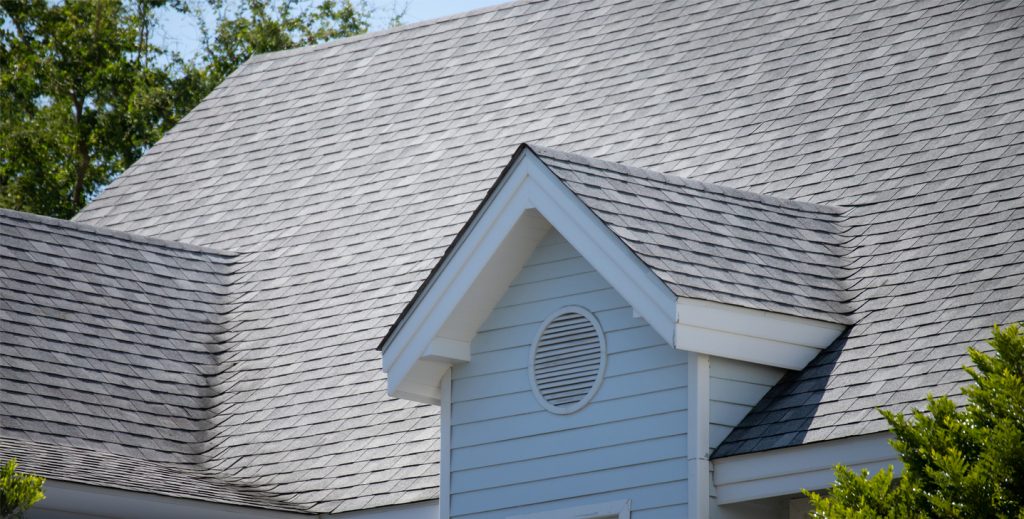
Rubber roof shingles can be manufactured to look like any type of roofing material. Since they are made from old rubber tires, they’re an eco-minded option. They are very lightweight and easy to install. Also, repairs are typically easy as well as inexpensive. Rubber shingles have a lifetime of approximately 30 years, even lasting through high winds and lightning strikes. They cost between $400–$800 per 100 square feet.
Metal Roofing Materials
Metal roofing is gaining traction in many areas for its durability and unique appearance. While shingles, particularly asphalt shingles, are still more common due to their affordability and ease of installation, metal shingles are gaining ground.
When the term metal roof is used, people are typically referring to roofs made of steel with either a galvanized zinc or galvanized aluminum coating. These roofing materials are great for climates that experience a lot of storms, large hail, or heavy snowfall, although they may corrode if exposed to sea salt spray. Perks of metal roofs are that they can usually be installed directly over old asphalt shingles and last around 50 years. Costs start at around $300 per 100 square feet.
Copper Roof Shingles
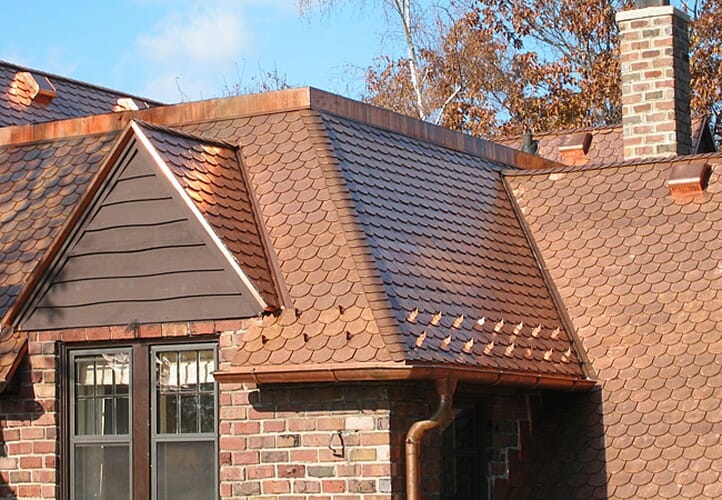
A copper roof is a top-of-the-line look that will increase the value of your home. The metal is not coated or painted because of the beautiful patina that occurs naturally over time. Doing an entire roof in copper is expensive, so many homeowners choose to feature it on just a portion of the roof, such as over a dormer window. Copper roof shingles are an investment, at $1,100–$1,500 per 100- square feet. However, you can expect an 85.9% return on that investment in your home’s resale value.
Slate Roofing
Another step up from copper is slate roofing. Experts say slate roofing can last over a century when properly installed. Like other types of roofing, slate is very heavy and needs the necessary structural strength below to support it. Slate roofing can cost over $1,600 per 100 square feet. In addition to the expense, it can be a challenge in many areas to find roofers experienced in installing slate roofing.
What to Consider When Replacing Your Roof
Replacing your roof is a big decision and a big investment. Not only does it cost a lot of money, but it also involves a lot of options to sort out. Things to consider when replacing your roof include:
- Choosing roofing materials that fit your budget
- Choosing roofing materials that accommodate how long you want to stay in your home (investing in long-lasting slate roofing might not be worth the cost if you plan to leave soon)
- Thinking about future roof maintenance and options for extending the life of your roof
- Developing a plan for your roof that is appropriate for your climate
Early Failure of Asphalt Shingles
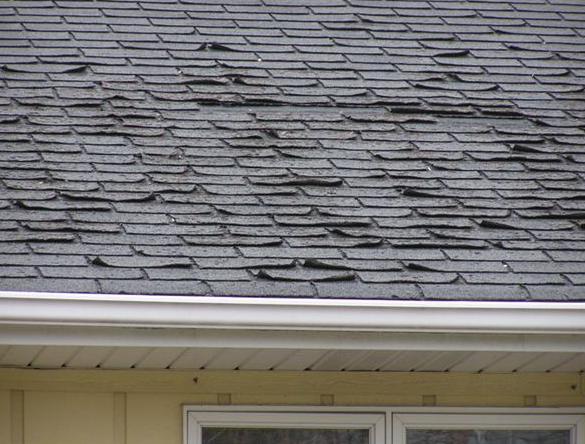
It’s important to talk about a major issue homeowners are seeing these days with asphalt shingles. A few decades ago, manufactured shingles were much heavier due to the percentage of asphalt contained within them. Nowadays, however, a lot of the asphalt in the shingles has been replaced with crushed limestone filler. This makes the shingles much lighter in weight and much less effective, even though the advertised warranty has jumped from around 30 years, to lifetime warranties.
This is a well-documented problem with even Bob Vila speaking out about it. Class action lawsuits have been filed on behalf of many homeowners across the country who have had their asphalt-shingle roof fail in as few as six years after installation.
Cost-cutting on the part of the shingle manufacturers has caused a variety of failures, including blistering, buckling, and leaking. These are expensive fixes and when homeowners turned to their warranty, they were shocked to realize the coverage only replaces the shingles themselves and doesn’t cover the labor costs of replacing the roof (which are about two-thirds of the total cost), and it doesn’t cover damages caused by the failures either.
If you have an asphalt shingle roof that is showing signs of a defect well before the warranty is up, you may be the victim of shoddy manufacturing. To mitigate the issue and keep your costs down, here’s what you can do:
- Make sure to have a roof inspection done by a professional every year, but especially have one done before the first 12 months is over so that you have a greater chance of being covered under a defect warranty.
- Contact your roofing company as soon as possible if there are any issues to find out more information about your warranty and to file a claim.
- Contact Roof Maxx to find out if roof rejuvenation is a good option for extending the life of your shingles by up to 15 years with repeated application, potentially saving you thousands of dollars in replacement costs.
7 Signs You Need a New Roof
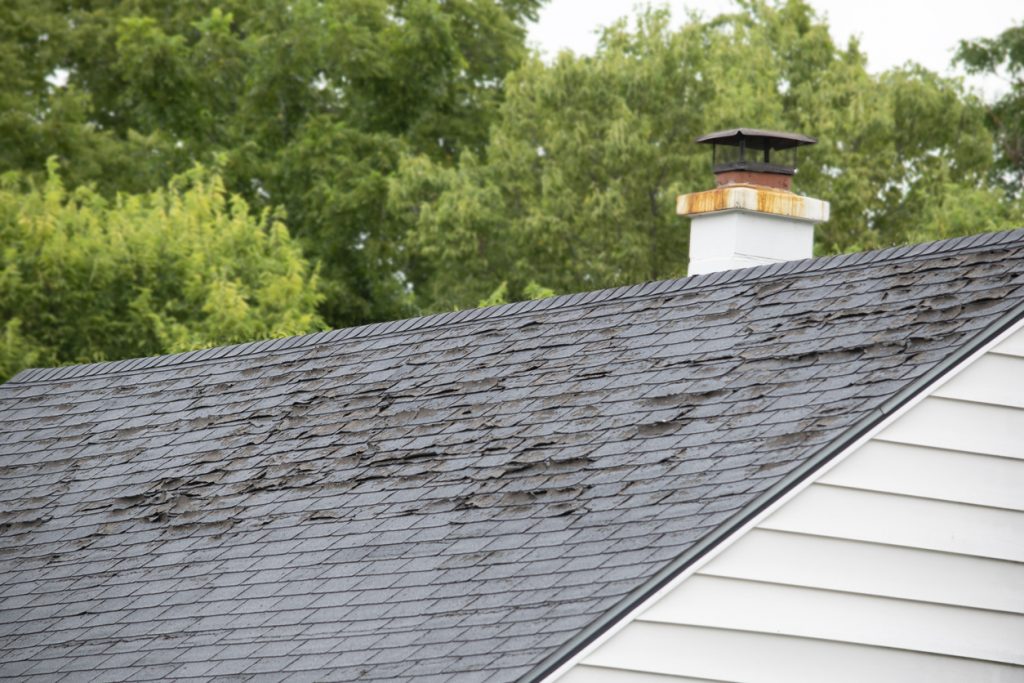
Do you know the warning signs you need a new roof? While roof replacement is expensive, it’s a bad idea to let it go past due. The consequences include increased energy bills, water damage, mold, pest infestation, decreased property value, and more. It’s best to replace it before the situation gets much worse than it needs to be. Here are seven interior and exterior signs that you need a new roof:
1. Shingle Edges are Curled or Cupped
This can occur simply from age or extreme weather, but also can be caused by poor roof ventilation, insufficient binders, or bad manufacturing or installation.
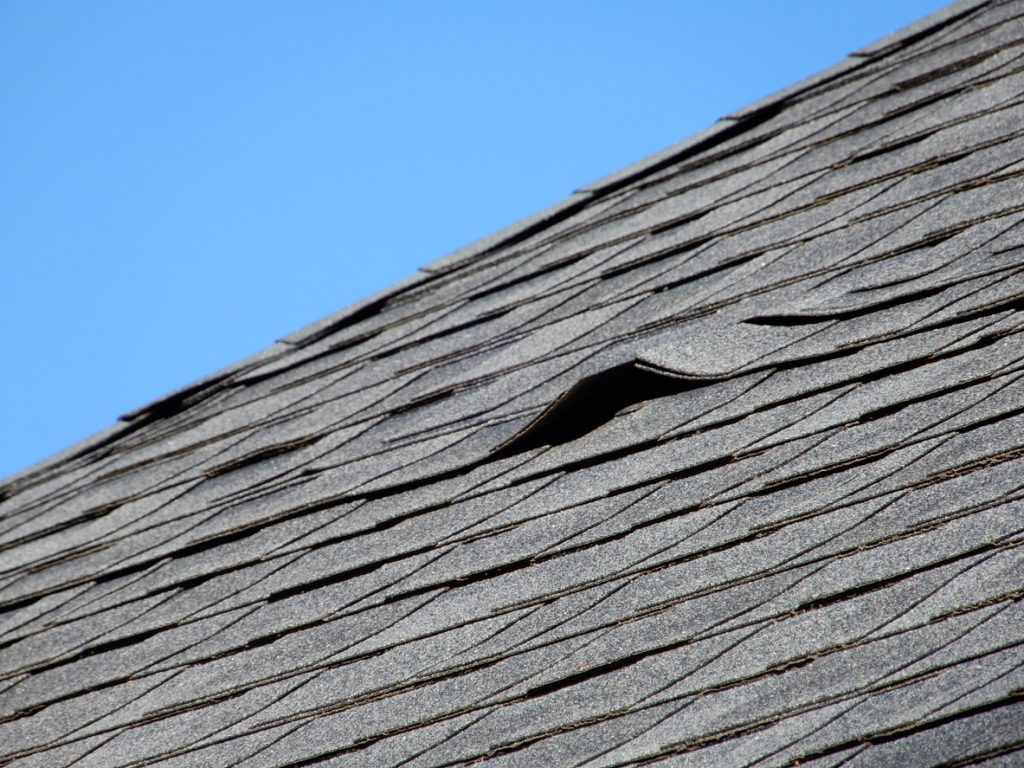
2. Dark Stains Have Formed
If you see dark stains on top or on the underside of your roof, your roof is likely leaking and causing moisture damage. This is terrible not only for your roof, but also for your home’s interior structure.

3. Your Roof Is Cracking or Sagging
Cracks are easy to see, but if you’re unsure if your roof is sagging, use a broom to lightly push at the suspected spot. If it’s wet or moves, you need a new roof immediately.
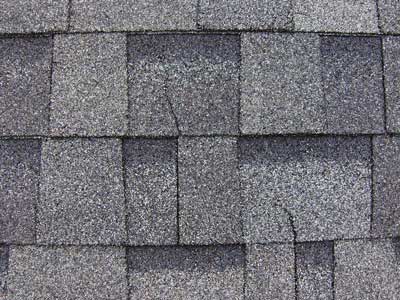
4. Signs of Rot or Mold
These both retain moisture and can quickly get out of control, weakening your structure.
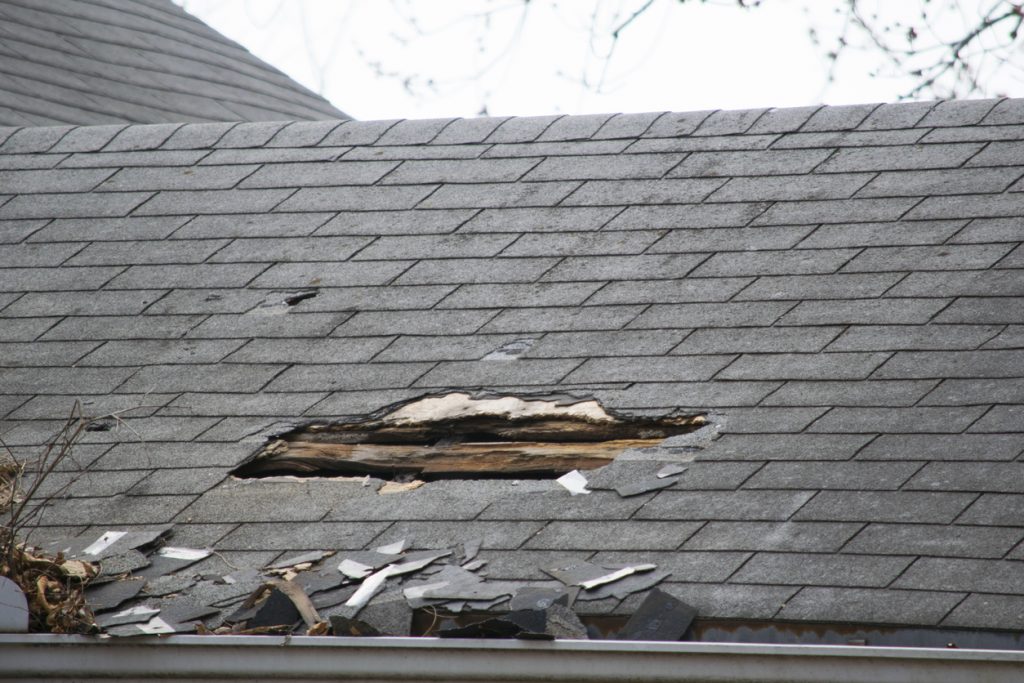
5. You See Bald Spots or Find Asphalt Shingle Granules in the Gutter
The granules help deflect heat and water away from your home. So if they are lacking, your roof will be more susceptible to problems.
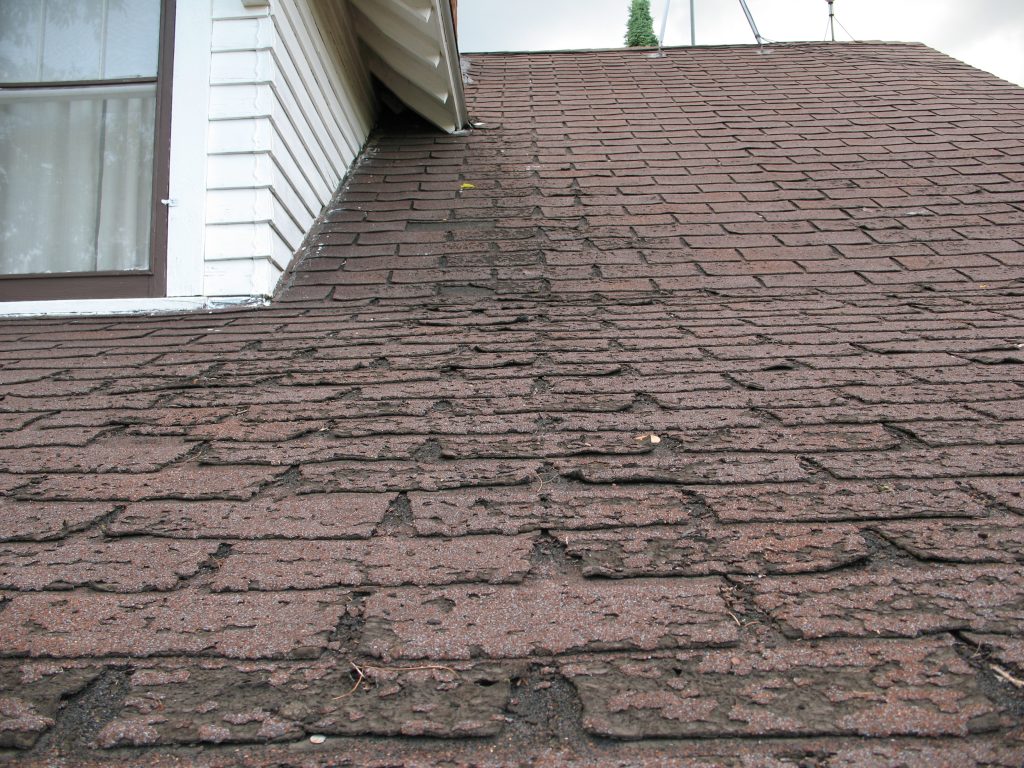
6. Your Chimney or Roof Flashing is Damaged
Flashing is the metal that is applied around joints, such as where the chimney meets the roof. Damage to the flashing allows water to seep in underneath the shingles, damaging your home’s infrastructure.
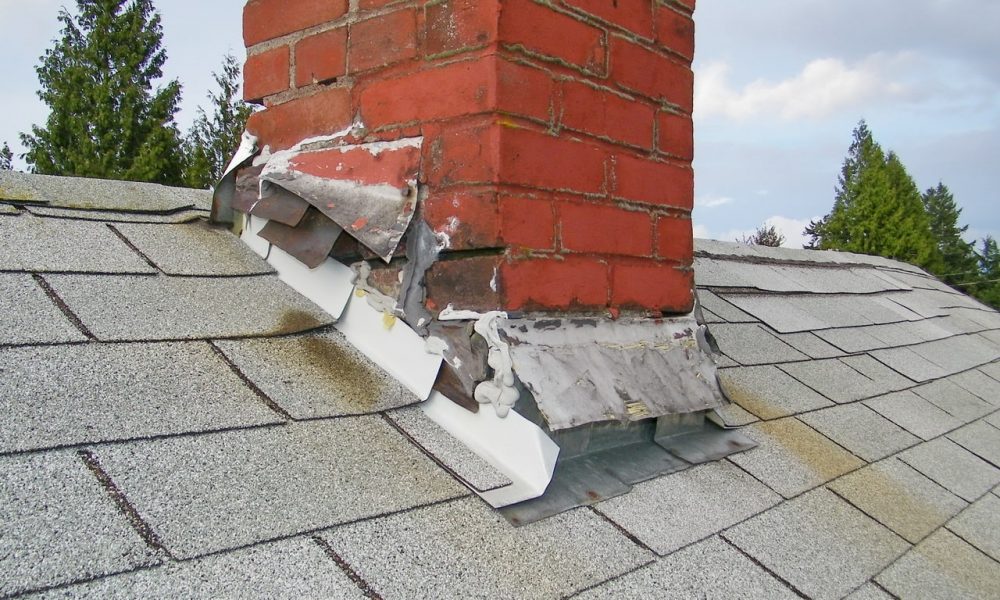
7. Others in Your Neighborhood Are Getting New Roofs
Homes in the same neighborhood are often constructed around the same time. So, your roof will need replacement when multiple neighbors start getting theirs replaced.
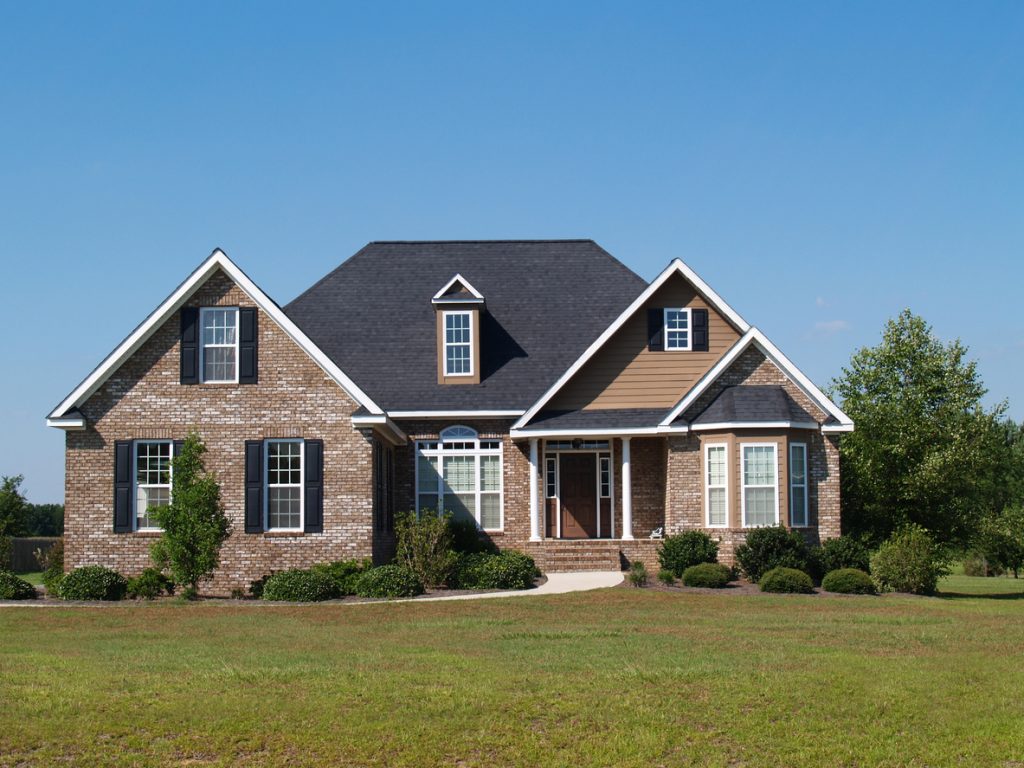
In addition to being cost-effective, asphalt shingle roofing has the added benefit of being easier to install than many other types of roofing. That helps reduce the time and cost of professional installation. It also means you can consider replacing your roof yourself, though there are many steps involved to make sure you get it done right.
How to Extend Your Roof's Life Expectancy
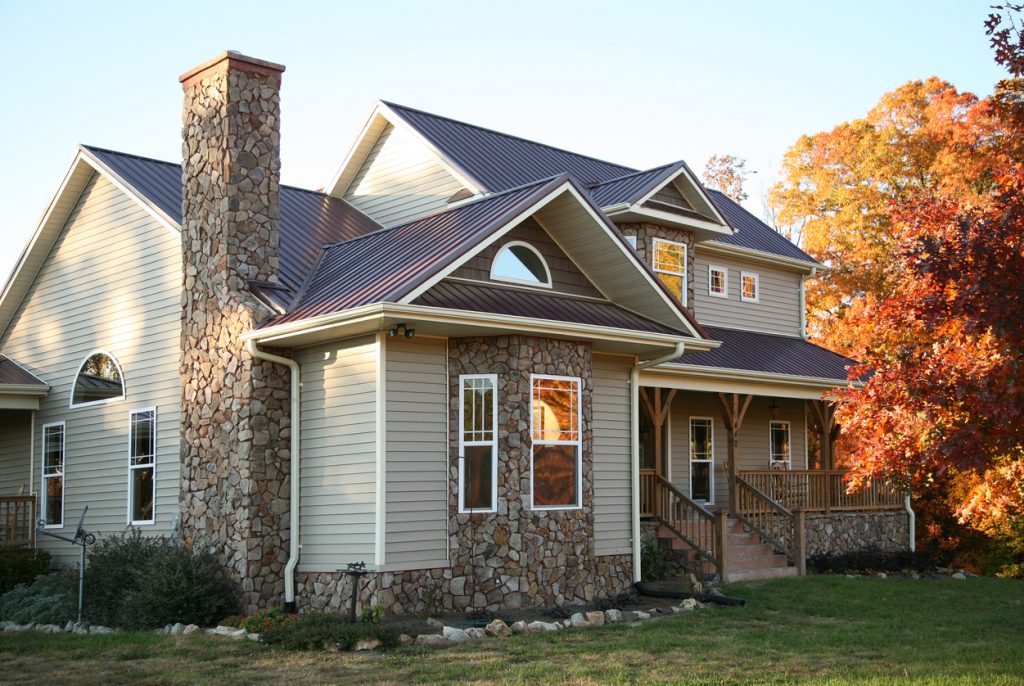
Since replacing your roof can be a large investment, it pays to know how to make it last longer. Other than choosing the right type of roof shingles for your climate and not just for budget or aesthetics, here are five ways to extend the life of your shingles:
- Maintain the area around your roof. This includes cleaning out the gutters so water doesn’t pool and trimming nearby branches so the fallen leaves don’t trap moisture, and fallen branches don’t cause damage.
- Try to limit foot traffic on the roof and never use a power washer to clean it, which can dislodge the important granules.
- Properly ventilate and insulate your attic. When air flows well, heat and humidity won’t build up on the underside of your roof, which causes the asphalt to dry out faster.
- Get a professional inspection every year so you can catch small fixes before they become big expenses. This is especially important after a severe storm.
- Another way to potentially extend the life of your asphalt roof is to paint your roof. Painting can add life to your roof, but it requires a lot of work. It can contribute to other issues, so it must be carefully thought out.
- The most effective way to add life to your asphalt roofing is to rejuvenate it with Roof Maxx’s scientifically-formulated, all-natural oil treatment. Roof Maxx has millions of microbeads of all-natural oil that penetrate your old roof and restore its flexibility and waterproofing protection.
Asphalt shingles that were once dry and brittle can function like new again, thanks to Roof Maxx’s innovative roof rejuvenation. A single application instantly adds five years of life to your roof and costs just 15–20% of the cost of replacing it.
By choosing the right roof in the first place and knowing how to make your roof last longer, including using the rejuvenation roof spray by Roof Maxx, the top of your home will not only protect you from the outside elements of sun, rain, and wind, but you’ll also be proud of its beauty.
Contact Roof Maxx today to find out how to make your asphalt roof last up to 15 years longer.











